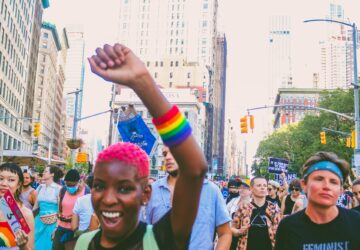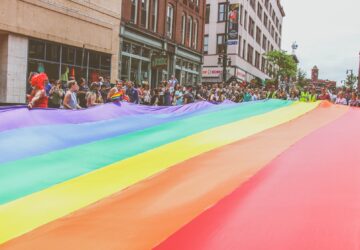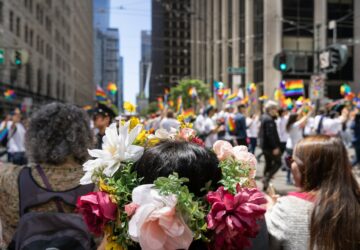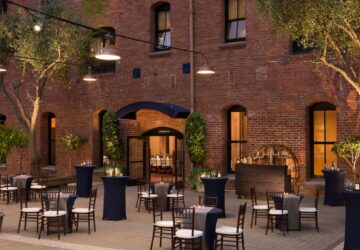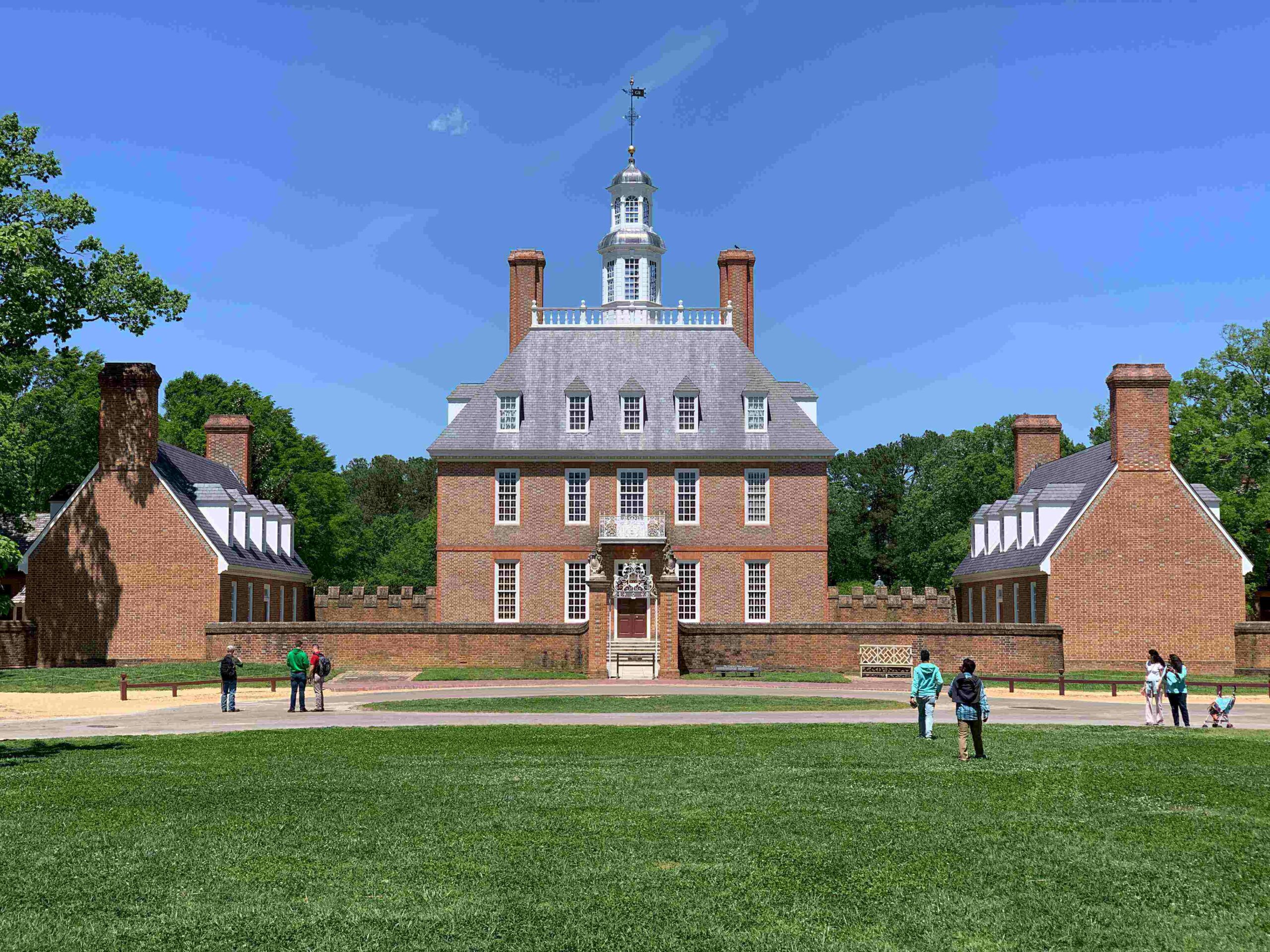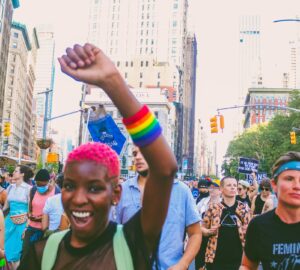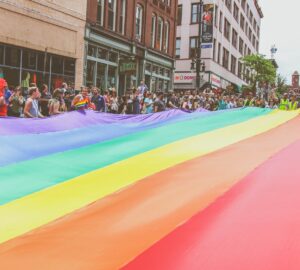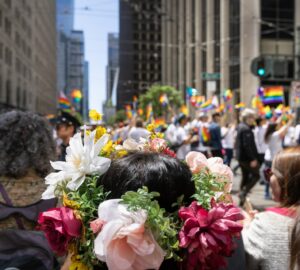If you’re looking for a vacation destination that will take you back in time, look no further than Colonial Williamsburg. This historic town is located in Virginia and is home to some of the most beautiful colonial-era architecture in the country.
You can explore the history of America by walking through the streets and talking with the people who live there. It’s an unforgettable experience that you won’t find anywhere else!
The History of Colonial Williamsburg and its Historical Sites Today
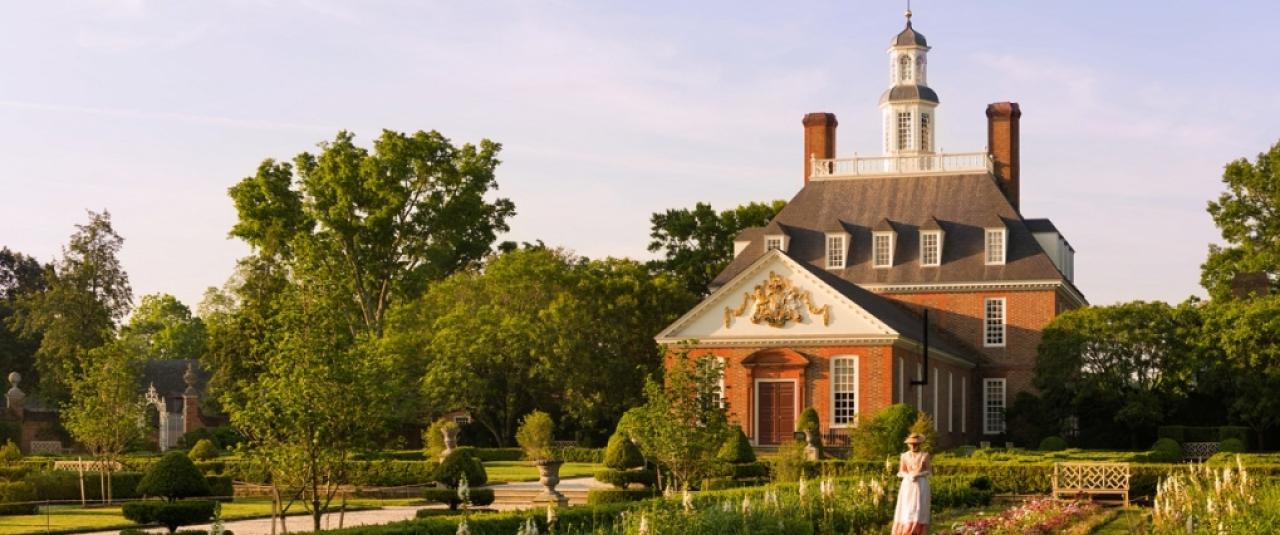
When the American ideal of freedom and independence was taking shape, Williamsburg was the booming capital of Virginia, and the colony was a rich and strong territory spanning west to the Mississippi River and north to the Great Lakes.
Williamsburg was the political, cultural, and educational capital of what was then the largest, most populous, and most important of the American colonies for 81 formative years—from 1699 to 1780 to be exact. Under the leadership of patriots such as George Washington, Thomas Jefferson, George Mason, and Peyton Randolph, the core ideals of our republic—responsible leadership, a feeling of public service, self-government, and individual liberty—were developed.
Today, Colonial Williamsburg is now the country’s largest outdoor living history museum, spanning 301 acres and featuring 500 reconstructed and restored public buildings, homes, stores, and taverns; tradesmen practicing 30 historic trades and domestic crafts; historical interpreters and character actors; and 90 acres of gardens and greens.
The Governor’s Palace, the Capitol, the DeWitt Wallace Decorative Arts Museum, the Abby Aldrich Rockefeller Folk Art Center, and Bassett Hall are all worth seeing.
Historical sites to visit in Colonial Williamsburg
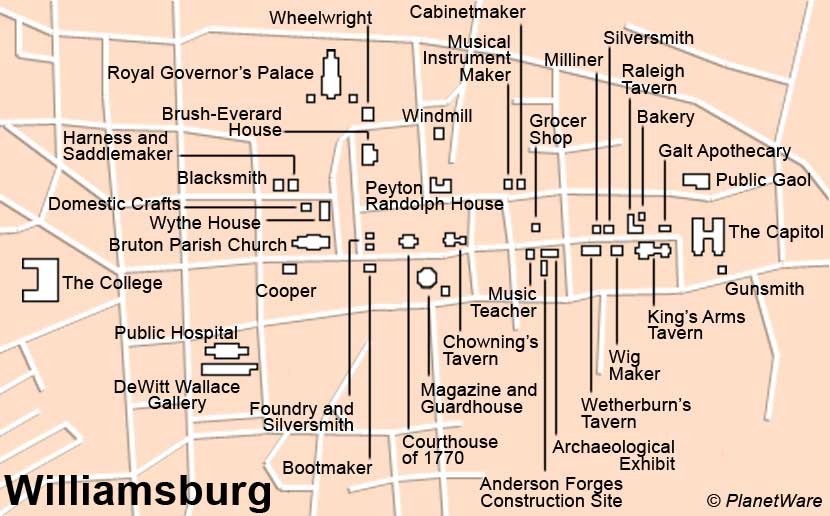
1. Governor’s Palace
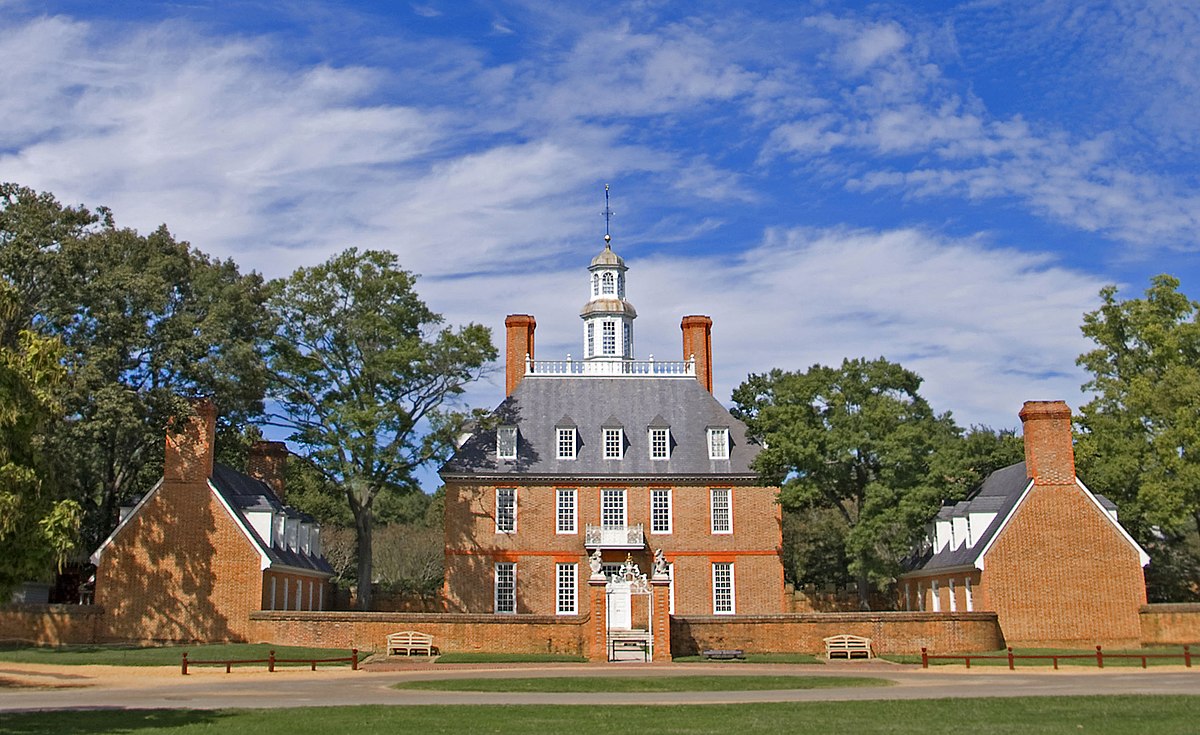
This is the restored home of Virginia’s colonial governors. It was also where Patrick Henry delivered his famous “Give me Liberty, or give me death!” speech in 1775.
The original Royal Governor’s residence was finished in 1722, but it was destroyed by fire and replaced with a duplicate in 1934. The Governor’s Palace was created to impress the residents with Royal power by hosting grand dinners and balls—it served as the social hub of Williamsburg. It was the house of Virginia’s first two governors after the Revolution.
Inside, you’ll find a collection of antique weapons and swords, as well as nicely equipped apartments. Outside, take a stroll around the terraced formal gardens, which feature a hedge labyrinth, and look inside the kitchen and scullery to see how historical dishes are made.
2. George Wythe House
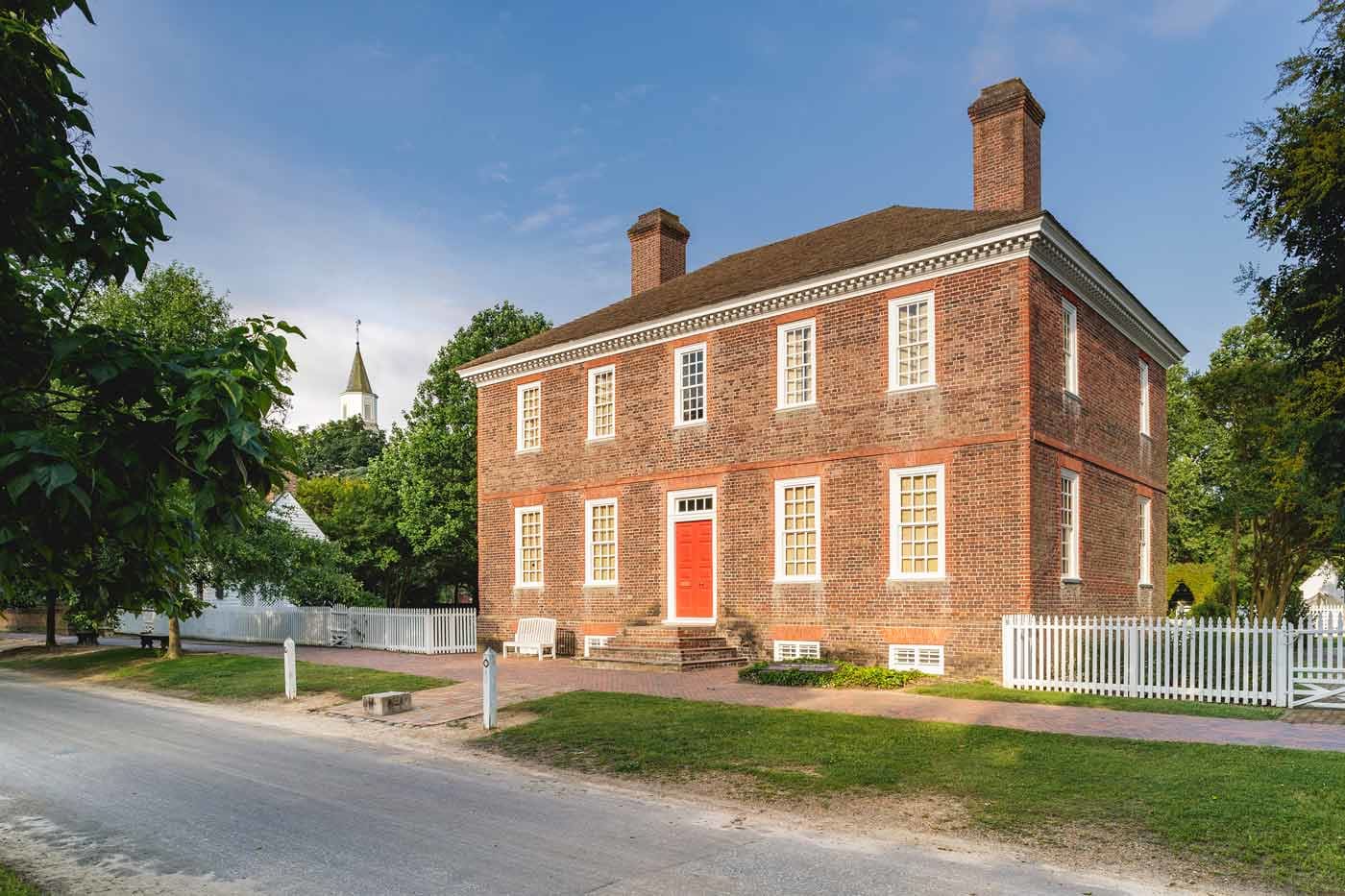
This is the restored home of George Wythe, a signer of the Declaration of Independence. After studying law in England and returning to America, Wythe taught at the College of William and Mary for more than 40 years.
George Wythe was a mentor to Thomas Jefferson and other Virginia patriots and leaders during the Revolutionary War, and he was one of the most intellectual and important individuals of the time. He was a signer of the Declaration of Independence and a representative to the Continental Congress. But the house’s illustrious past does not end there.
Before the British siege of Yorktown, it was General George Washington’s headquarters, and after the triumph at Yorktown, it was the headquarters of the French General Rochambeau. While serving as a representative to the Virginia General Assembly in 1776, Thomas Jefferson and his family resided here.
Outbuildings such as a kitchen, smokehouse, dovecote, and stable, as well as exquisite formal gardens, are located alongside the house. Wythe lived here from 1775 until his death in 1806.
3. Busch Gardens
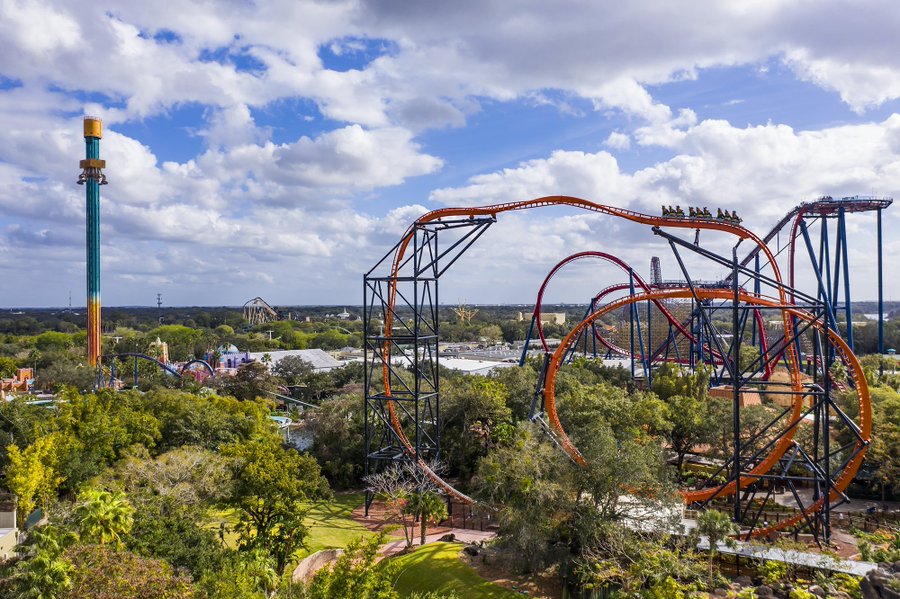
Whether you’re a parent, a thrill-seeker, or simply want a day of unfettered fun, this dynamic combination of the adventure park, zoo, playground, and performance stage has something for you. Meet the Muppets, take a “Rhine” boat, clap along to Bavarian oompah bands, ride in a teacup, or ride the iconic Loch Ness Monster roller coaster.
The Verbolten, a water ride among Pompeii’s ruins, and the hair-raising 195-foot Alpengeist, one of the world’s tallest and fastest coasters with inversions at speeds up to 67 miles per hour, are among the rides with German and other European themes. Visitors who are less adventurous can visit the Highland Stables to witness border collies herd sheep, meet Clydesdales, and engage with colorful exotic birds in a free-flight aviary.
4. Colonial Taverns
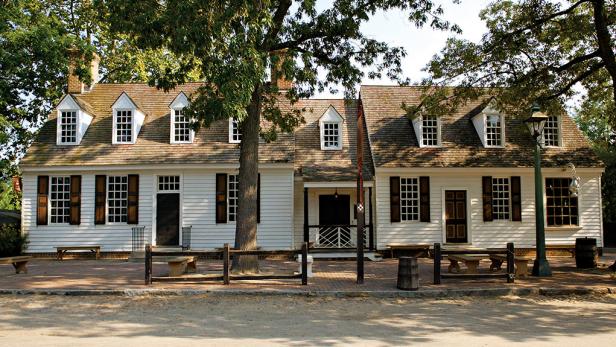
One of the best ways to experience Colonial Williamsburg is to visit one of its many taverns. There are six in all, each with its own unique personality and menu. From a modern sports bar to a traditional English pub, you’re sure to find the perfect spot for your taste.
Taverns were where locals and tourists gathered for news, food, and socializing in colonial Virginia. Some of them are still open for business in Williamsburg, where visitors can get a sense of 18th-century social life while sampling real foods that Jefferson or Washington could have loved.
Raleigh Tavern was a popular hangout for members of the House of Burgesses, and Wetherburn’s Tavern, just across the street, was similarly popular. Both taverns hosted balls and banquets, and almost 200,000 antiques were discovered on the grounds of Wetherburn’s during restoration.
The gentry was catered to at the King’s Arms Tavern, which opened in 1722 with the finest furniture and service. Today, it serves as the principal dining room in the historic district, complete with 18th-century musical entertainment.
Chowning’s Tavern, which initially opened in 1766 and caters to a less affluent clientele, is much more relaxed. The restaurant maintains this attitude today, offering traditional English meals and hosting evening Gambols, which include colonial games and music.
Christiana Campbell’s Tavern was George Washington’s favorite, and you may still order Christiana’s unique seafood meal here, just as he did. Shields Tavern offers a diverse home-style meal in a relaxed setting.
5. DeWitt Wallace Decorative Arts Gallery and Abby Aldrich Rockefeller Folk Art Museum
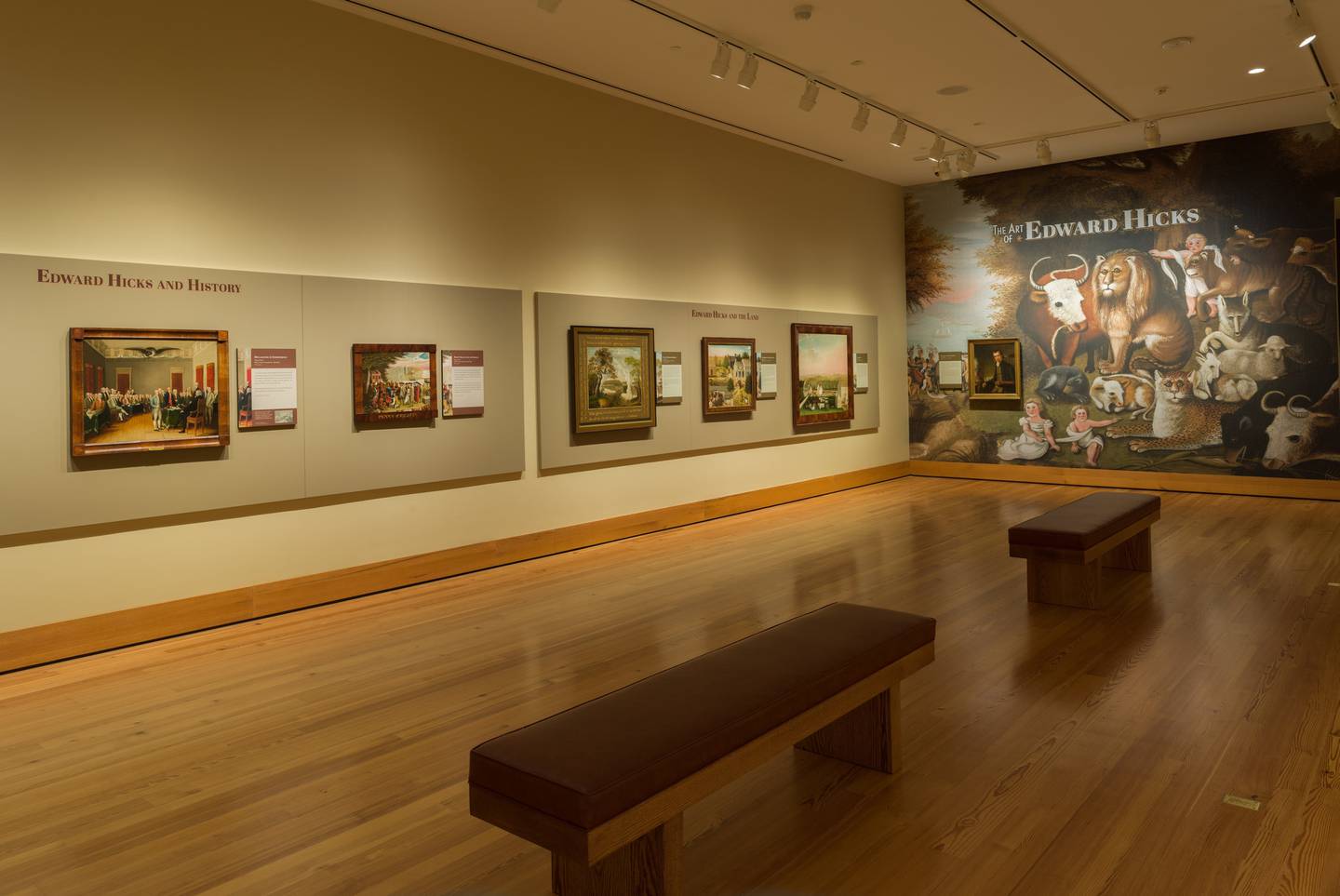
The DeWitt Wallace Decorative Arts Gallery features a rotating exhibition of American and European decorative art from the late 18th century to the early 20th century. The Abby Aldrich Rockefeller Folk Art Museum is dedicated exclusively to folk art, including furniture, textiles, paintings, sculpture, and crafts from all over the world.
While connected to Colonial Williamsburg, two renowned art museums share a structure that is not part of the Revolutionary City historic region. The DeWitt Wallace Ornamental Arts Gallery features decorative arts from the 17th to 19th centuries from America and the United Kingdom.
The world’s biggest collection of furniture created in the American south, one of the world’s greatest collections of English porcelain outside of Britain, and a significant collection of English silver are among the museum’s many highlights.
The Abby Aldrich Rockefeller Folk Art Museum has one of the most comprehensive collections of American folk art, with sculptures, paintings, toys, woodcarvings, needlework, quilts, and other decorative items made by untrained artists.
6. Jamestown Settlement
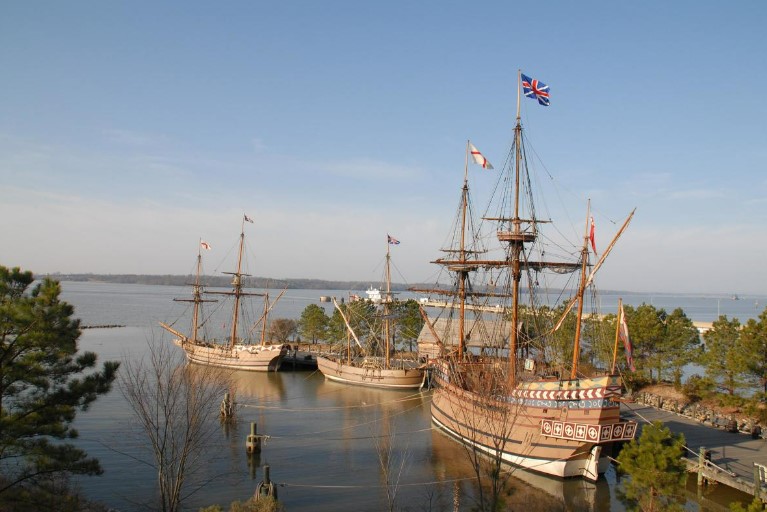
Just a few minutes from Colonial Williamsburg is Jamestown Settlement, which tells the story of the first permanent English settlement in America. The museum features outdoor and indoor exhibits on three floors, including a replica of the ships that brought the colonists to Virginia in 1607.
You can also experience what it was like to live as a colonist by trying your hand at some of the same tasks they did, such as planting and harvesting crops, cooking over an open fire, or making a broom. There’s even a section on the Powhatan Indians who lived in the region when the English arrived.
7. Great Hopes Plantation

The restored buildings along Duke of Gloucester Street were formerly the residences of Williamsburg’s wealthiest citizens, but that was not the case for the majority of the city’s people in the 18th century. The majority of them lived and worked on tiny plantations owned by poor farmers. Many of them were slaves and lived in modest huts or cottages. Great Hopes Plantation is a more recent addition that depicts the lifestyle of a modest family farm.
You may witness rare varieties of farm animals they would have known, explore their gardens, and watch cooking demonstrations in addition to reproductions of their buildings. Planting, caring for livestock, crafting equipment, cooking, and other household chores keep interpreters occupied.
8. Berkeley Plantation
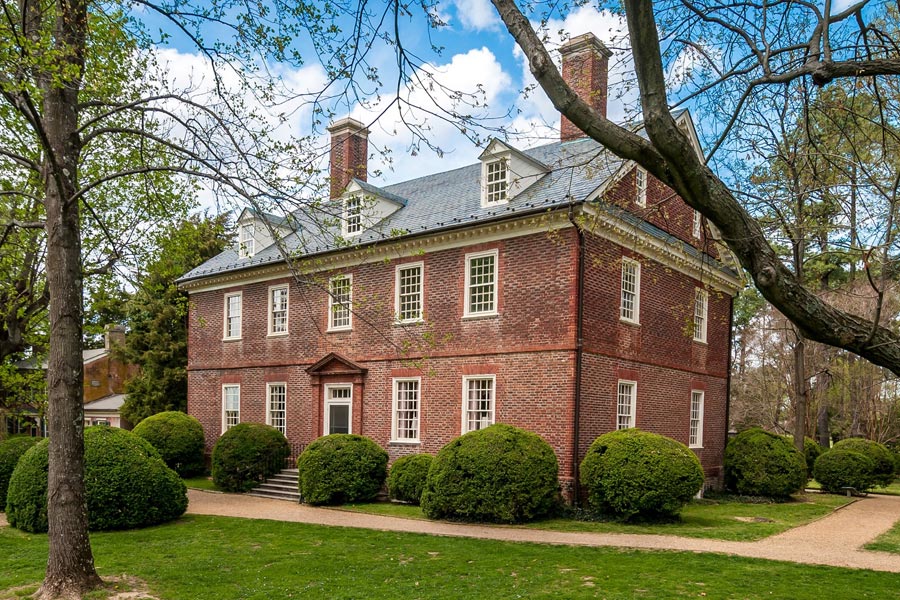
Berkeley, the most historic of all the plantations along the James River, has been designated as a National Historic Landmark on many occasions. The first Thanksgiving was held here in 1619, and Taps was written here in 1862 when it was Union General McClellan’s headquarters during the Civil War.
President William Henry Harrison was born in Berkeley, California. However, travelers today will remember it for its stunning Georgian architecture and chambers filled with precious antiques. The renovated gardens with boxwood-hedged terraces overlooking the James River are a must-see.
9. College of William and Mary
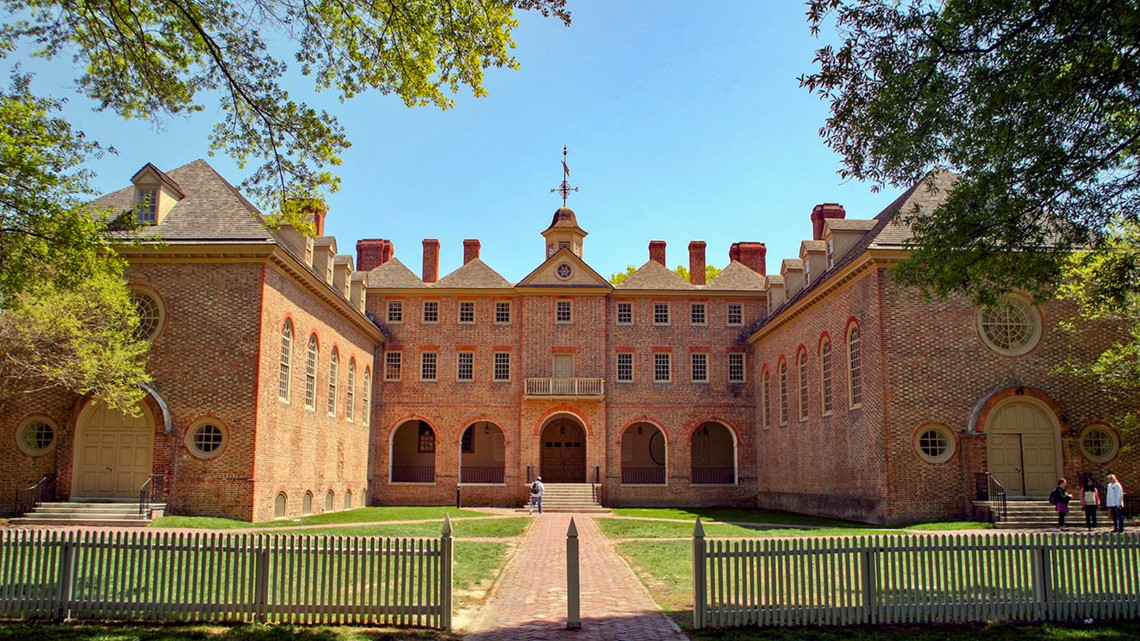
The College of William and Mary is the second oldest college in the United States, behind Harvard. It was founded in 1693. Courses were taken here by George Washington, Thomas Jefferson, James Monroe, and John Tyler. The Wren Structure, erected in 1695 and restored in 1732 following a fire, is the oldest operating educational building in the United States.
The first floor of the Wren Building is available to the public, and student-led campus tours are packed with information about the college’s history and tales. Visit the building where British General Cornwallis stayed and listen to free organ music in the chapel. The Muscarelle Museum of Art hosts traveling exhibitions and sculptures may be found across the grounds.
10. Bassett Hall
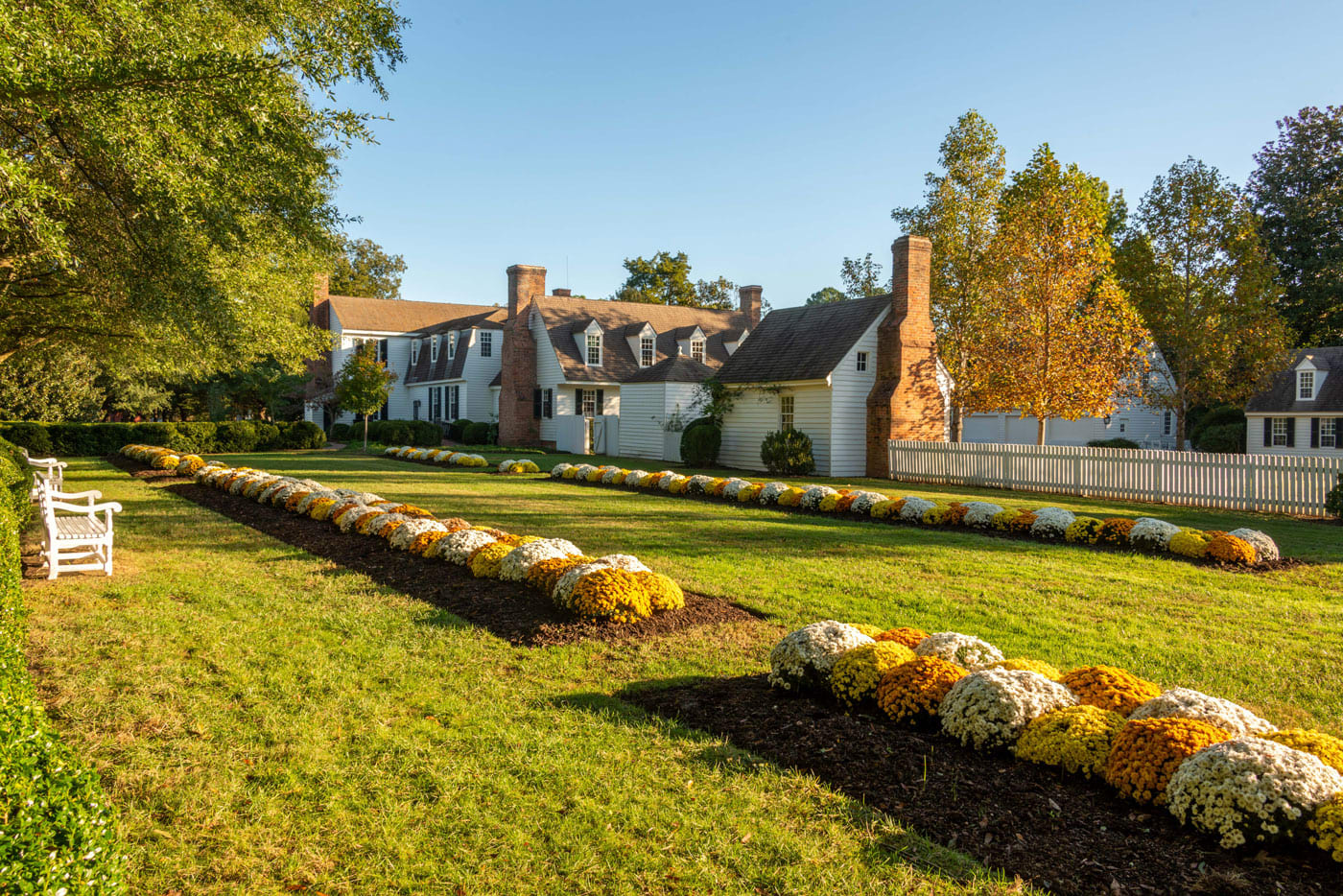
Bassett Hall is a Georgian-style mansion that served as the home of Virginia’s governors from 1885 to 1988. It is now open to the public as a museum, and visitors can take guided tours of the stately rooms filled with period furniture and decorations.
The mansion was originally built for Samuel G. Bassett, a successful businessman and one of the founders of the Virginia Electric and Power Company. The exterior is made of brick covered in white stucco, with limestone trimming around the windows and doors.
The grounds surrounding Bassett Hall are also worth a visit, as they feature a beautiful garden and several examples of Colonial-era architecture.
The People of Colonial Williamsburg
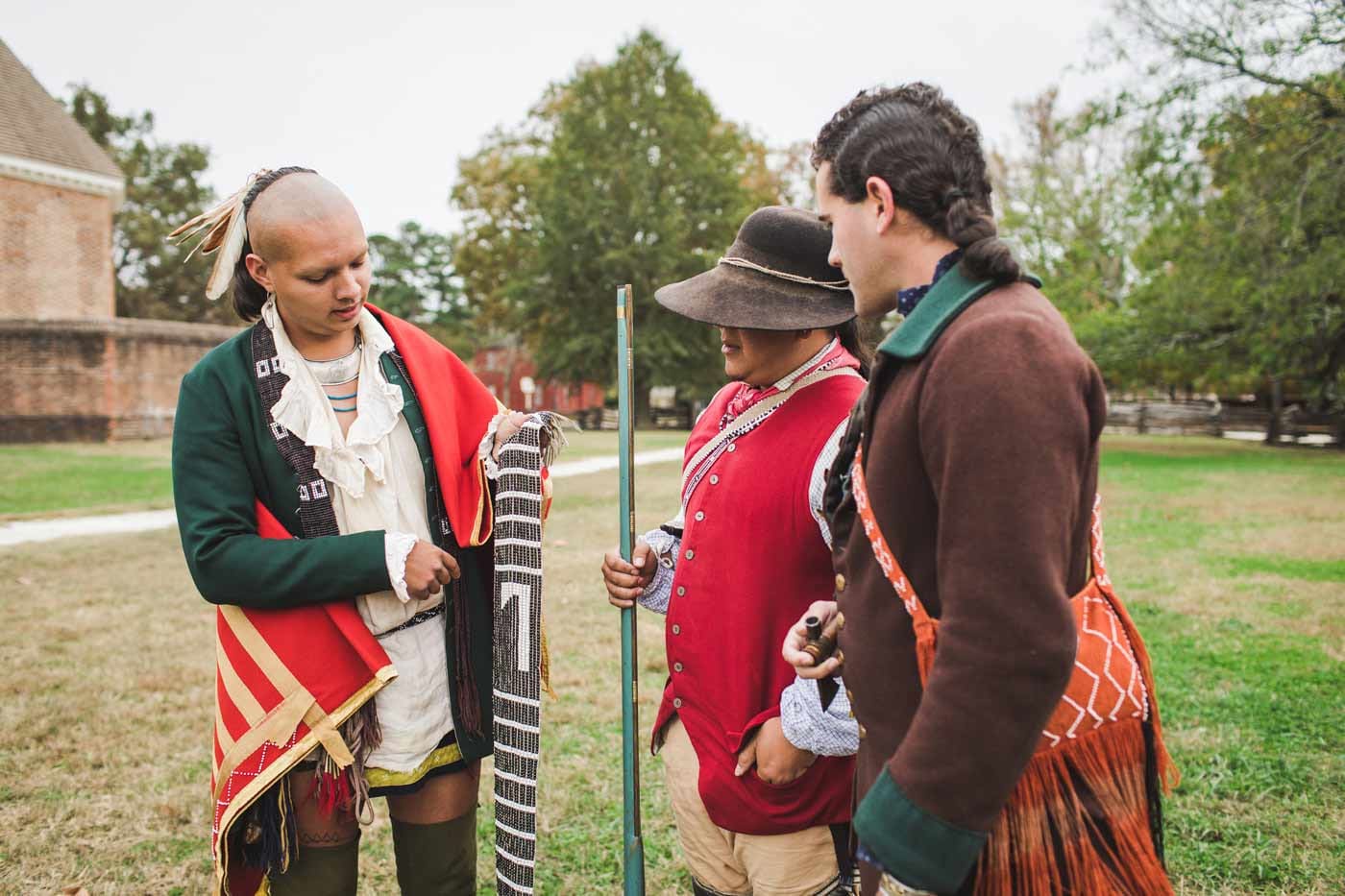
The people of Colonial Williamsburg are what make history come to life. You can watch blacksmiths working at their forges, weavers spinning thread on their looms, and silversmiths crafting delicate jewelry. There are also performances by actors in period costumes, who will tell you about the lives of the colonists and the Powhatan Indians.
Some of the people you’ll “meet” in Colonial Williamsburg include:
- George Washington, who was a surveyor in the area and later became the first president of the United States
- Thomas Jefferson, who was a student at William and Mary and drafted the Declaration of Independence
- James Monroe, who also studied at William and Mary and later became the fifth president of the United States
- John Tyler, who was the tenth president of the United States and attended William and Mary for two years
- Elizabeth I, who was the Virgin Queen and ruled England from 1558 to 1603
- King George III, who was the king of England during the American Revolution
- Chief Powhatan, who was the leader of the Powhatan Indians and father of Pocahontas
The Architecture of Colonial Williamsburg
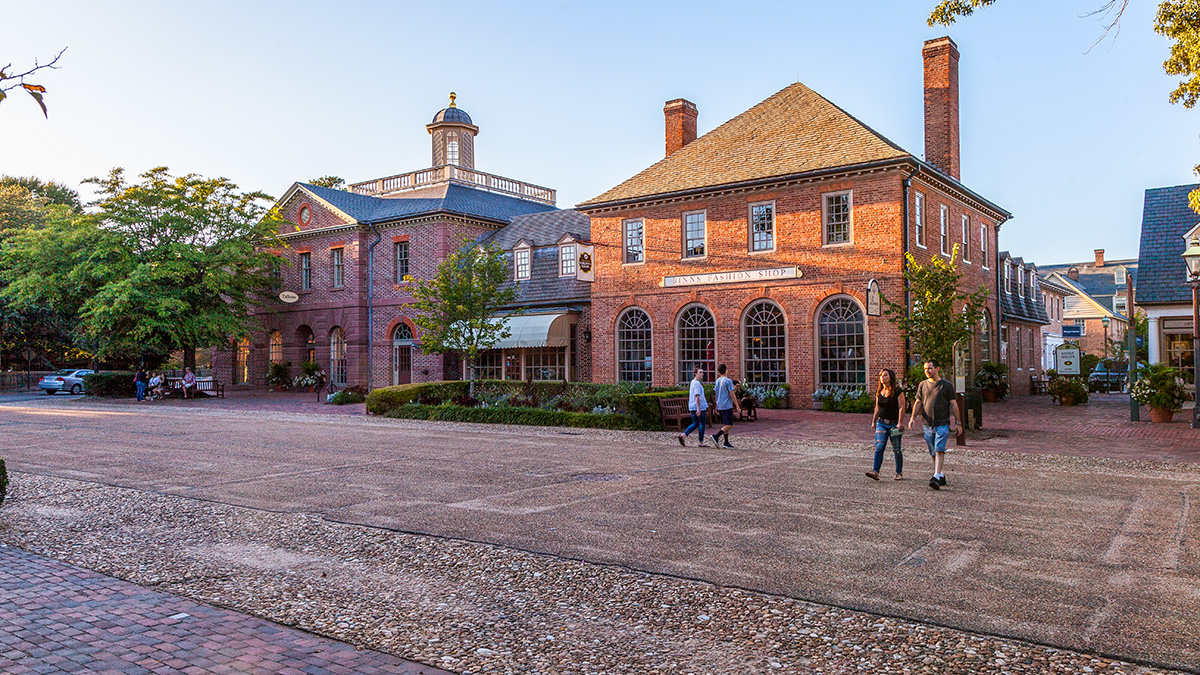
Colonial Williamsburg is home to some of the best examples of Georgian architecture in the United States. The buildings are made of brick covered in white stucco, with limestone trimming around the windows and doors.
The most famous example of Georgian architecture in Williamsburg is the Wren Building, which was erected in 1695 and restored in 1732 following a fire. The first floor of the Wren Building is available to the public, and student-led campus tours are packed with information about the college’s history and tales. Visit the building where British General Cornwallis stayed and listen to free organ music in the chapel.
Other notable examples of Georgian architecture in Williamsburg include the Capitol Building, Bassett Hall, and the Governor’s Palace.
Colonial Williamsburg is a living history museum that is home to some of the best examples of Georgian architecture in the United States. The people of Colonial Williamsburg are what make history come to life, and you can watch blacksmiths working at their forges, weavers spinning thread on their looms, and silversmiths crafting delicate jewelry.
There are also performances by actors in period costumes, who will tell you about the lives of the colonists and the Powhatan Indians. So be sure to visit Colonial Williamsburg on your next trip to Virginia!
Featured Image Credit: Research.com
